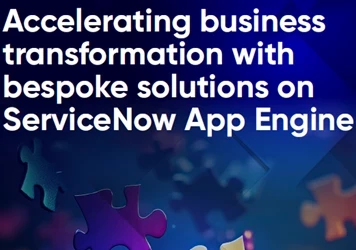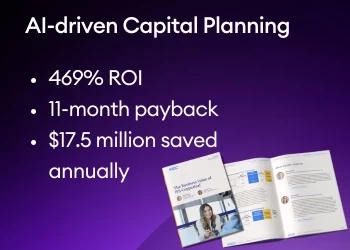Definitions of business transformation vary widely across organizations
The PEX Report 2025/26 found that business transformation means different things to different people, clearly driven by business and industry specifics
Add bookmark
Business transformation definitions vary significantly in modern organizations. This complex, fast-evolving discipline continues to span diverge stages and touchpoints both general and unique to businesses.
The PEX Report 2025/26 found that business transformation means different things to different people, clearly driven by business and industry specifics.
Just under a quarter (24 percent) of survey respondents define business transformation as “improving processes/process efficiency,” followed by “digital transformation” (17 percent) and “artificial intelligence (AI) driven innovation” (16 percent).
“Cultural transformation” (10 percent), “other” (9 percent) and “system transformation (cloud, ERP, CRM, etc.)” are the next most cited. Just 4 percent of respondents define business transformation as “organizational redesign,” followed by “adopting new technology” (3 percent) and “employee upskilling and reskilling” (1 percent).
Join the PEX Network community

Don't miss any news, updates or insider tips from PEX Network by getting them delivered to your inbox. Sign up to our newsletter and join our community of experts.
Learn MoreWhy do business transformation definitions vary so much?
“There is no linguistic standard for the term ‘business transformation,’ and so we have the current diffusion of meanings,” according to Tony Saldanha, co-founder of Inixia Inc. and instructor of Certified Master of Dynamic Process Transformation. “All of them arise from the simple premise of transforming or changing a business.”
However, the context of the word “business” could be someone’s personal work (e.g. their work as a bank teller) or a company’s work (e.g. the entire bank’s business model), he added.
Manufacturers may equate business transformation with digital twins and operational excellence (OPEX), banks with data-driven customer models and public bodies with transparency and service access, commented Ricardo Henriques, transformation leader and business automation professor at Católica Lisbon School of Business and Economics. “Internally, a risk-averse culture views transformation as compliance, while an entrepreneurial culture sees it as growth fuel.” Success rates therefore swing widely, depending on sector, size and leadership style, he added.
“Rather than trying to force a linguistic standard, which will never work, my preference is to create maturity levels of transformation,” stated Saldanha. “In my book Why Digital Transformations Fail, I set out a five-stage maturity model – Foundations, Siloed, Partially Synchronized, Fully Synchronized and Living DNA. That helps drive specificity in the meanings.”
Register for All Access: AI in Business Transformation 2025!
Other areas of difference in business transformation
It’s not only business transformation definitions that differ notably. Just under a third (32 percent) of business transformations are structured via enterprise-wide transformation offices, with a quarter (25 percent) organized at the business unit/department level. A fifth (20 percent) of organizations have a top-down strategy, with 9 percent applying a bottom-up/grassroots approach. Transformation is structured via project management offices (PMOs) in 5 percent of businesses, while 9 percent of respondents say their organization has no business transformation strategy.
Business topline growth is the leading measure of business transformation success, cited by 25 percent of respondents. This is followed by increased throughput/efficiency (22 percent), cost savings (17 percent) and customer acquisition and retention (10 percent). Improved customer satisfaction is the next most common (6 percent), just ahead of employee engagement/retention (5 percent), employee productivity (4 percent) and reduced operational risk (3 percent).
Executive committees and chief executive officers (CEOs) are the leading sponsors of business transformations, 36 percent and 24 percent, respectively. This is followed by chief operating officers (COOs) (10 percent), department heads (8 percent), chief transformation officers (7 percent) and chief financial officers (CFOs) (5 percent).
Over half (58 percent) of respondents view business transformation as a mission-critical strategy to help organizations drive growth, manage turnaround and deliver strategic objective. This is followed by improving productivity and efficiency (47 percent), automating processes (28 percent) and adapting to new ways of working (27 percent).
Improving customer satisfaction through better quality and efficiency was cited by 27 percent of those polled with 22 percent selecting a way to deliver culture and leadership change across an organization.
Professional Process Excellence Certification Provided by Inixia in Partnership with PEX Network

Designed for today’s fast-paced, competitive business landscape, this certification signals a deep capability in operational excellence and innovation. It enables professionals to lead process transformation across functions and industries, and become change agents within their organizations. Whether you're advancing your career or strengthening your team’s performance, the Certified Master of Dynamic Process Transformation provides a forward-thinking, results-driven approach to creating sustainable value and long-term success.
Learn More













